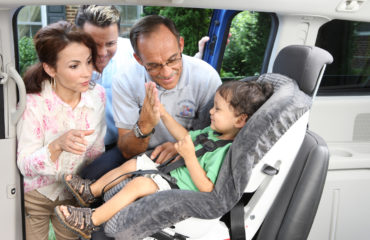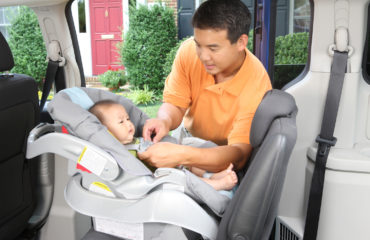3 Tips To Avoid Placing Your Child Or Pet At Risk For Heatstroke
Have you ever walked out to your car, opened the door and sat down inside, only to get back out because of the heat? Have you ever put your hands on the vehicle’s steering wheel and jerked them back because it was too hot to touch? These are common experiences to many of us. Now, imagine a child or a pet sitting inside that hot car, for minutes or hours. Heat causes children and pets to quickly overheat and after a short time, they can die from heatstroke. This article will provide three tips to prevent that from happening.
Did You Know?
- Heatstroke is the leading cause of non-crash, vehicle-related deaths for children.
- Young children are particularly at risk as their bodies heat up three to five times faster than an adult’s.
- In the summertime, cars heat up quick –19 degrees in 10 minutes. Tragedies can happen fast.
Tragedy Strikes
Heatstroke has been in the news lately after a Georgia father left his son in a hot car all day and then charged with murder for his son’s death. The initial public response was one of sorrow for the father’s loss and shock that he could be charged with murder. However, as additional information was shared, the shock has turned to anger at the father.
Putting aside the ultimate issue of innocence or guilt of that father, heatstroke is a deadly situation that is preventable. Since 1998, at least 622 children across the United States have died from heatstroke while unattended in a vehicle, with 44 children dying in 2013. Of the over 600 deaths:
- 51% were children “forgotten” by caregivers, with parents making up over 70% of the total caregivers.
- 29% were children playing in unattended vehicles
- 18% were children intentionally left in the vehicle by an adult
In addition, pets are suffering as well. Many pet owners who take their dog out for a ride have left the dog in the car with the resulting tragedy of the dog’s death.
Working For A Solution
Yet, in the midst of all this tragedy, there is positive news, and action is being taken. The National Highway Traffic Safety Administration (NHTSA) has worked to raise awareness, developing a public message of “Look Before You Lock.” This coming July 31st is set as a day for a Social Media Conversation on heatstroke.
States are creating Task Forces to elevate the message and increase the reach into a community. The Texas’ Heatstroke Task Force contributed to a three-year reduction of child heatstroke deaths in Texas by 62%.
Organizations like Safe Kids Worldwide and others are speaking out and raising awareness. A Heatstroke Task Force Guide has been created by Safe Kids Worldwide and shared with others to encourage further action.
However, the bottom line is always you, and your actions. As a parent, a grandparent, an aunt or uncle, friend or even as a stranger, you can make a difference.
Time To ACT
Safe Kids Worldwide provides three basic tips for those who are involved with a child or pet, or as a bystander who comes across a child or pet in a vehicle alone. Using the acronym, ACT, the tips are:
A: Avoid heatstroke-related injury and death and never leaving your child alone in a car, not even for a minute. Also, make sure your car is locked when you’re not in it so kids don’t get in by themselves.
C: Create reminders by putting something in the backseat of your car next to your child such as a briefcase, a purse or a cell phone that is needed at your final destination. This is especially important if you’re not following your normal routine.
T: Take action. If you see a child alone in a car, call 911. Emergency personnel want you to call. They are trained to respond to these situations. One call could save a life.
No matter your status, be it as a caregiver or a bystander, you can make a difference. You can be a lifesaver. If you see a child or a pet in a car, take the time to ACT.







